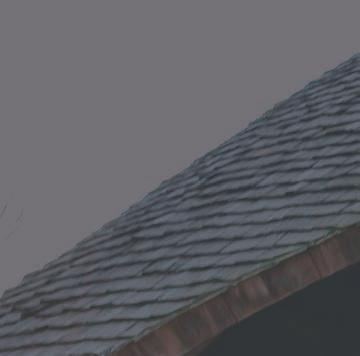
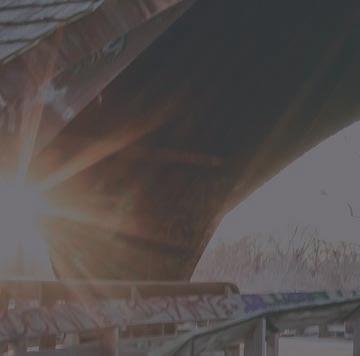
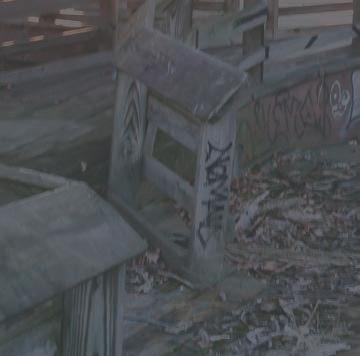
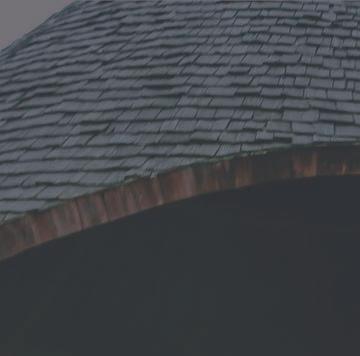
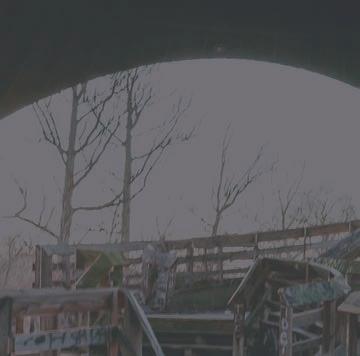
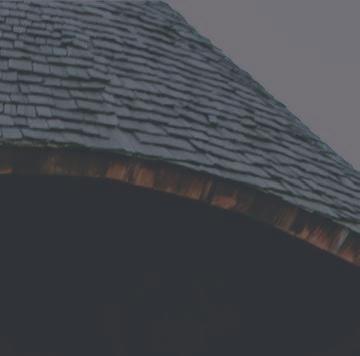


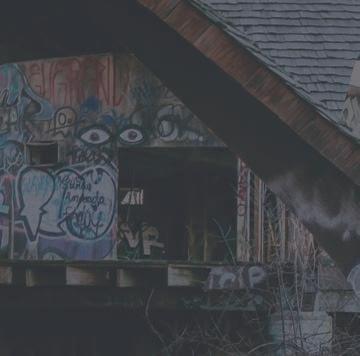

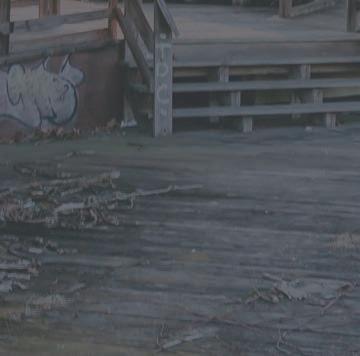












 Izzy Wilde
Izzy Wilde





 Photo: Reddit
Photo: Reddit
I would like to acknowledge that today we meet on Dakota lands and will be discussing the lands of the Chippewa and Ottawa tribes. Belle Isle was long known as Wahnabezee or Swan Island by many indigenous tribes and was a sacred stopping point for individuals traveling along the river. I would like to take this moment to also acknowledge the individuals that still practice their rich cultural traditions in this space today despite the acts of hate and injustice inflicted upon them and their ancestors. May we all work together to right the wrongs made by those that came before us and foster an environment of love and peace for those that will come long after us.
The success of the industrial revolution was built on the backs of hardworking Midwesterners now left with landscapes in various stages of abandonment. But the future of those landscapes is in the hands of those who dare to stay and see hope in the long odds of these spaces. People from Detroit know what it means to see a city slowly dying around them. There are 75,000 abandoned parcels in the city and countless tons of raw material. But this impact is not uniquely human. The impact of the industrial revolution on local ecosystems is immeasurable, causing thousands of animal species to lose habitat areas, migration routes, and waterways. Many of these species will never have the opportunity recover. The advancement of human technology was built upon their backs as well. But there are species that will have the opportunity to thrive once again if given the chance.
The Eastern red bat, Blanding’s turtle, and mudpuppy all called the Detroit River area home before industry and are currently highly endangered in the area as a result of development. Organizations like the Detroit Zoological Society are working to increase the success rate of these species in areas like Belle Isle. In this project priorities are placed solely on the well-being of these three species to re-establish their populations and the populations of those like them through rewilding efforts and creating ideal habitat spaces. All facets of these species lifestyles must be accounted for in order to reintroduce a species and that is the ultimate goal of the spaces designed within this project. This project takes raw materials and an overgrown landscape and transforms it to be ecologically beneficial for the three target species, maintaining many of the derelict buildings as the return to nature and create more material potential for habitat use.




























Detroit has over 75,000 abandoned parcels today with several located on Belle Isle.



























































As industrial development continued in Detroit, the fill from the mainland to make room for factories was dumped into the Detroit River and tacked on to the ends of Belle Isle. This grew the island by 20% over the next 100 years.
All of this material was deeply contaminated and contributed to species having to leave the area. The Eastern Red Bat, Blanding’s Turtle, and Mudpuppy are all species with the potential to recover and be stewards for animals like them.














BELLE ISLE ZOO
FEBRUARY 2024















































The abandoned Belle Isle Zoo site was chosen for the re-establishment of these populations because of the potential for material re-use and the ability to meet these very specific habitat requirements. This includes factors such as the diverse mix of water types, ruderal vegetation, and proximity to human activity. Although this project aims towards restoration, this does not always look like new shiny development or clean sleek spaces. Rather, Detroit knows that their strength lies in their grit.

















































The Eastern Red Bat roosts in host trees including oaks, hickories, and elms. Bats prefer to be on the edges of forests to have adequate space for echolocation and swooping to catch prey. Proximity to open wetlands was also important here. Keeping the lit area of the site isolated away from habitat areas allows the bats to better navigate their habitat.























Bat structures are constructed with wood beams from buildings and cedar shingles from roofs. All bat houses have to adequately sealed and insulated to combat White Nose Disease, which has spread throughout vulnerable bat populations in their hibernaculum.




















































This bat house was made from the original design to be a refuge for Eastern Red Bats. The exterior was made of cedar and the interior made of pine, both non treated painted with non-toxic paint. Notches are dug into the inner post to allow the bats to grip on to for hanging.


EASTERN RED BAT
Central Habitat



EASTERN RED BAT Point of View












MARCH-APRIL: EMERGE FROM OVERWINTERING





JULY-SEPT: DROUGHT REFUGE, DEEPER WATERS






























APRIL-OCT: MOVEMENT BETWEEN






 1.25 MILES OF TRAVEL
WETLANDS
1.25 MILES OF TRAVEL
WETLANDS
























Nearly 100% of Blanding’s Turtle eggs are stolen by the abundance of predators on the island. These nest boxes are placed over eggs after they have been laid and keep predators out while allowing the hatchlings to exit from a small opening. The structure is composed of wood slats and chain link fencing from the parameter fence.








































The wetlands are composed of ideal water bottoms to aid in over wintering and completing their life cycles.







































































































































Detroit is truly a motor city, people drive around the island for recreation opportunities. But this has led to high mortality rates in herpetiles on Belle Isle including the Blanding’s turtle. Herpetile underpasses are placed throughout the island to connect water ways, in areas where these animals are currently residing, and in the new habitat areas proposed on the zoo. This will allow ease of transportation to and from habitat spaces for turtles to easily complete all parts of their life cycle.









































Mudpuppies are important bio-indicators of water quality in the River. But they also enjoy some of the discarded post industrial concrete in the waterways. By reusing concrete from the zoo, we can be assured that the material is safe and clean for these animals.






MUDPUPPY SURVEY
JANUARY 2024








































Human use is secondary on this site and is allowed only on the boardwalk. People are discouraged from moving off of the boardwalk based on a variety of factors including: height, vegetation, wet areas, and fencing. Views out to the habitats depend on the heights of the boardwalk and tree cover. Human use is broken down into three sections: evening access, ground level, and grand pavilion.







































Each planting was chosen based on habitat and life cycle needs of the three species as well as their native status in Michigan. In the wetlands, plants that are also beneficial to the adjoining wet mesic flatwoods are included. Barrier plantings were chosen because they prohibit people from coming into the space in some way: being irritating to the human skin, dense growing, or having thorns. All of these plants also serve functions within the animal species.







































Boardwalks quickly reach 10 feet of height after people enter the site from the former zoo exit point. This is the only portion of the boardwalk that is lit up and is accessible in the evening. People are able to get up close with the remaining buildings and look out on the barrier vegetation.







































The existing caging underneath the boardwalk will remain and create a gabion structure to keep all of the material on site. At this point in the boardwalk, people take steps down underneath and become the caged animals looking out on to what the tigers may have once seen. Upon ascending the stairs again, the boardwalk slopes to become level with the wetland. This is the first point at which all three species are occupying a space.
































At the grand pavilion, people are able to get close to the dilapidating buildings and also look out on to the various areas of habitat where all three species are co-existing. This is the epicenter of the abandoned zoo and the final focal point for visitors.










MARK VASSALLO
MIKE REED
CHARLIE RAMSEY
BONNIE VAN DAM
AMANDA TREADWELL
ANDY MCDOWELL
KAREN LUTSKY
THE DETROIT ZOO
Thank you!





Thank you all for sharing your amazing knowledge and experiences with me. Whether it was chatting over the phone, letting me catch some mudpuppies, or telling me stories about the amazing life of the old zoo, it all had such a great impact on me and the success of this project. Thank you for answering all my emails!
Beilke, Elizabeth A., G. Scott Haulton, and Joy M. O’Keefe. “Foliage-Roosting Eastern Red Bats Select for Features Associated with Management in a Central Hardwood Forest.” Forest Ecology and Management 527 (January 1, 2023): 120604. https://doi.org/10.1016/j.foreco.2022.120604.
Belle Isle Zoo, Opening Day, May 1, 1990, Tape 1, 2018. https://www.youtube.com/watch?v=KMmWBc6byNs.
Blue Heron. “Build a Turtle Protector.” Accessed February 20, 2024. https:// www.blueheronheadwaters.org/turtleprotector.
Brown, Adrienne Maree. “The River.” Open Rivers Journal (blog), March 4, 2019. https://openrivers.lib.umn.edu/article/the-river/.
City of Detroit. “Green Stormwater Infrastructure Projects,” June 17, 2020. https://detroitmi.gov/departments/water-and-sewerage-department/ dwsd-projects/green-stormwater-infrastructure-projects.
Clancy, Cara, and Kim Ward. “Auto-Rewilding in Post-Industrial Cities: The Case of Inland Cormorants in Urban Britain.” Conservation & Society 18, no. 2 (2020): 126–36.
Detroit Collaborative Design Center. “Detroit Collaborative Design Center.” Accessed November 19, 2023. https://www.dcdc-udm.org.
“Detroit Future City: Think Tank, Policy Advocate, Innovation Engine.” Accessed November 19, 2023. https://detroitfuturecity.com/.
Dorman, John L. “Exploring Detroit’s Underground Railroad Sites.” The New York Times, February 24, 2017, sec. Travel. https://www.nytimes. com/2017/02/24/travel/detroit-michigan-windsor-canada-river-underground-railroad-slavery.html.
Dunham, A E, D W Tinkle, and G L Breitenbach. “Emydoidea Blandingii,” n.d.
Holzwarth, Aline. “The Three Laws of Human Behavior.” BehavioralEconomics.com | The BE Hub, May 7, 2019. https://www.behavioraleconomics. com/the-three-laws-of-human-behavior/.
Hooper, Nathaniel. “Making Deconstruction Economies Work in Michigan: A Praxis-Based Framework for Deconstruction Feasibility Assessment in Michigan,” n.d.
Hudsonia Ltd. “What’s so Special about the Blanding’s Turtle.” Accessed February 12, 2024. https://www.hudsonia.org/natural-histories/whats-so-specialabout-the-blandings-turtle.
Marsh, Jane. “Can the Construction Industry Decrease Habitat Destruction?” Environment Co, December 16, 2019. https://environment.co/ what-can-the-construction-industry-do-to-decrease-habitat-destruction/.
Minnesota Department of Natural Resources. “Emydoidea Blandingii : Blanding’s Turtle | Rare Species Guide.” Accessed February 12, 2024. https:// www.dnr.state.mn.us/rsg/profile.html?action=elementDetail&selectedElement=ARAAD04010.
Nature, Center for Humans and. “The Return of Detroit River’s Charismatic Megafauna.” Center for Humans and Nature (blog), November 17, 2014. https://humansandnature.org/return-detroit-rivers-charismatic-megafauna/.
Planchuelo, Greg, Ingo Kowarik, and Moritz von der Lippe. “Endangered Plants in Novel Urban Ecosystems Are Filtered by Strategy Type and Dispersal Syndrome, Not by Spatial Dependence on Natural Remnants.” Frontiers in Ecology and Evolution 8 (2020). https://www.frontiersin.org/articles/10.3389/ fevo.2020.00018.
“Plant Population Success across Urban Ecosystems: A Framework to Inform Biodiversity Conservation in Cities - Kowarik - 2018 - Journal of Applied Ecology - Wiley Online Library.” Accessed November 19, 2023. https://besjournals. onlinelibrary.wiley.com/doi/10.1111/1365-2664.13144.
says, Vanessa Harrison. “Landschaftspark Duisburg Nord by Latz + Partner.” Landezine (blog). Accessed February 8, 2024. https://landezine.com/post-industrial-landscape-architecture/.
Tepper, Laura. “Road Ecology: Wildlife Habitat and Highway Design.” Places Journal, September 22, 2011. https://doi.org/10.22269/110922.
“Traffic Counts.” Accessed February 12, 2024. https://www.semcog.org/ traffic-counts.
“Transportation Data Management System.” Accessed February 12, 2024. https://mdot.public.ms2soft.com/tcds/tsearch.asp?loc=mdot&mod=tcds&local_id=82-6531.
“White-Nose Syndrome.” Accessed March 21, 2024. https://www.whitenosesyndrome.org/static-page/how-you-can-help. Wilson, Gary. “Detroit River Restoration: There’s Progress, but the Daunting Process of Toxic Sediment Removal Remains.” Great Lakes Now, October 22, 2019. https://www.greatlakesnow.org/2019/10/detroit-river-restoration-progress-remediation-epa/.
Woltz, Hara W., James P. Gibbs, and Peter K. Ducey. “Road Crossing Structures for Amphibians and Reptiles: Informing Design through Behavioral Analysis.” Biological Conservation 141, no. 11 (November 1, 2008): 2745–50. https://doi.org/10.1016/j.biocon.2008.08.010.